Surreal suppers: the artists playing with their food
From Salvador Dalí to Imogen Kwok, artists have long been enamoured with the playful possibilities of food; we explore the evolution of food art
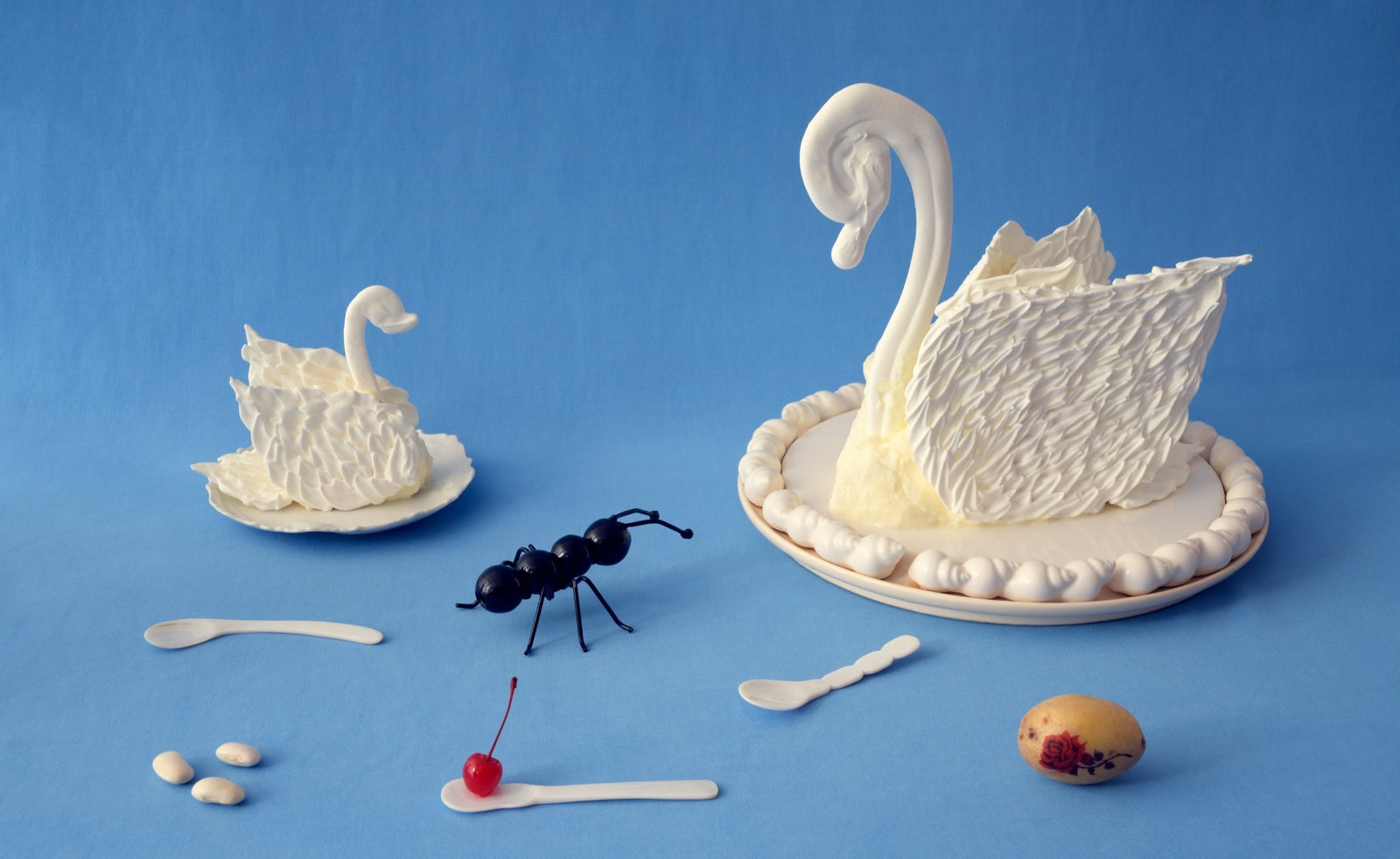
When Wallpaper* guest editor Laila Gohar began making her food sculptures almost 15 years ago, the landscape of food art was, in her words, ‘No man’s land’. Now, the world of high-food is increasingly dense, populated by a troupe of artists taking the aesthetic of eating to dizzying heights.
Gohar, for one, has become recognisable for her extravagant food sculptures: tittering langoustine towers, artichoke swans, and plush bread furniture.
Imogen Kwok’s style is more minimalist; she crafts dainty crudo mobiles, delicate mushroom jewellery, and jewel-like candied fruits.
The Grecian urns of Zélikha Dinga, meanwhile, are sculpted from the likes of cheese and bread, taking on a mystic, semi-religious quality.
Food as a creative practice, however, is ancient. For as long as humans have been eating food, this staple of life has embodied more than simply sustenance. Historically integrated into our cultural rituals, food stands as an imaginative expression of our unique ways of life. And over centuries of cooking, baking and feasting, food has evolved into a meeting site for nourishment, community, performance and art. Food, then, is one of the most universal and accessible expressions of creativity that we share globally.
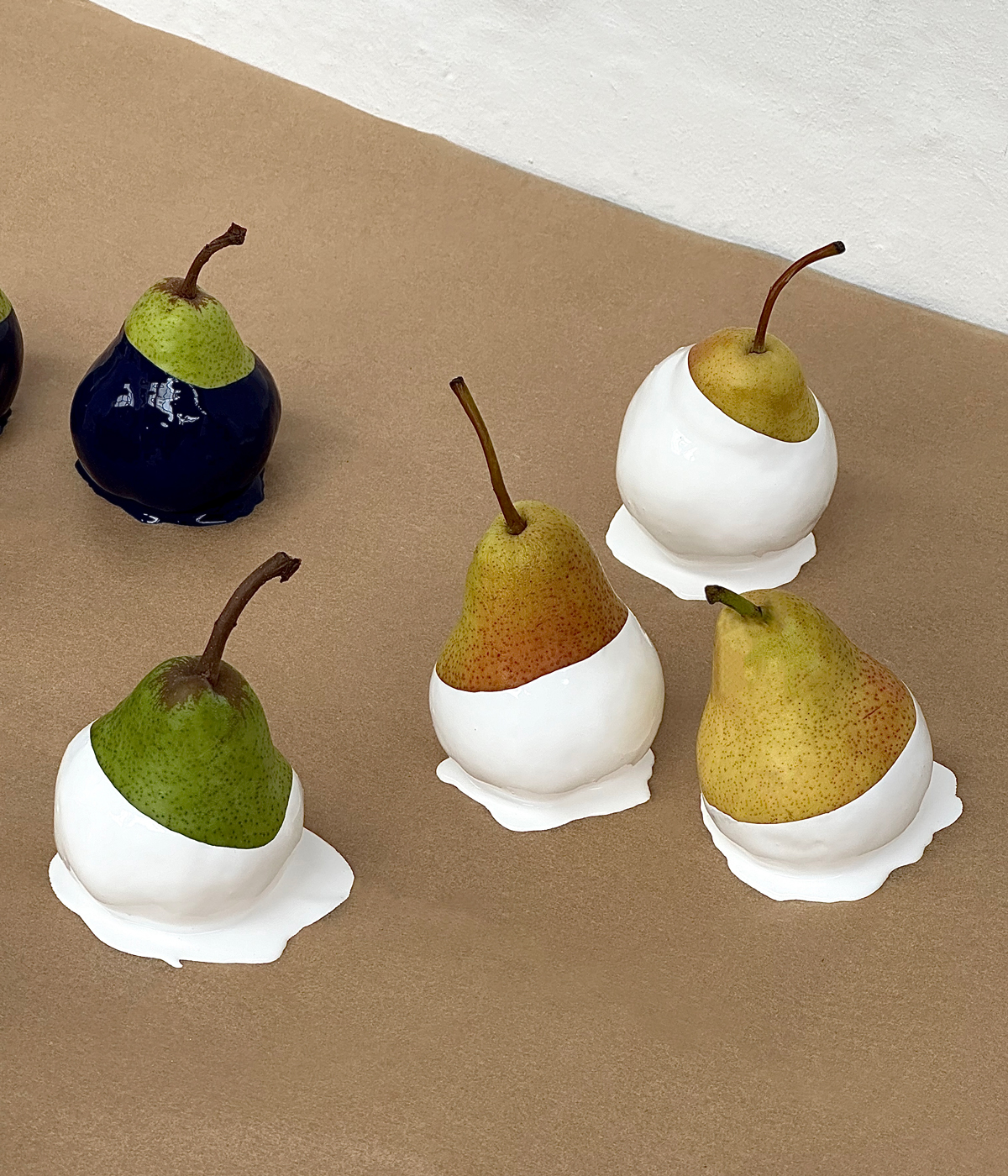
Imogen Kwok food sculptures for Georg Jensen
Artists, too, have been quick to appreciate this. Dutch still-life painters drew on the rich symbolism of fruit in their work, exploring temporality, appetite and religion through this motif. Salvador Dalí, with his cookbook Les Diners de Gala, served up surrealism with his meals, creating absurd recipes such as ‘Peacock à l’Impériale dressed and surrounded by its court’ and ‘Thousand Year Old Eggs’. His classic works ‘Lobster Telephone’ and ‘The Persistence of Memory’, the latter supposedly inspired by melting camembert, distort food further. ‘The jaw is our best tool to grasp philosophical knowledge,’ he wrote.
In the last decade, jelly became the wobbly medium of Bompas and Parr, who described themselves as ‘culinographers’ – an amalgamation of the culinary and the pornographic. It was the next era of the fetishisation of food, taking shape in weird and wonderful jelly architecture and eccentric flavoured fireworks.
Wallpaper* Newsletter
Receive our daily digest of inspiration, escapism and design stories from around the world direct to your inbox.
‘I hate food for display. I think that it’s wasteful, and it's kind of in bad taste’
Laila Gohar
‘Historically, there's been a lot of cross-pollination [between food and art],’ Laila Gohar tells Wallpaper*. And in her own experience, ‘a lot of artists can cook’. ‘[They’ve] been known to throw elaborate dinner parties, even to write cookbooks,’ she says. The two are inherently similar, Gohar continues, for the creation of art and the creation of food are both nourishing acts.
In the work of today’s food artists, as with many of their predecessors, sustenance takes on a surreal quality when it is bent to the extremities of the creative will. The actual consumption of such pieces isn’t always immediately apparent. Kwok notes that people often react to her food in this way, expressing thoughts such as, ‘Oh, can we touch this? Is this edible? Is this a sculpture?’ It seems food artists find ground in the gap between food and art, playing with the boundary.
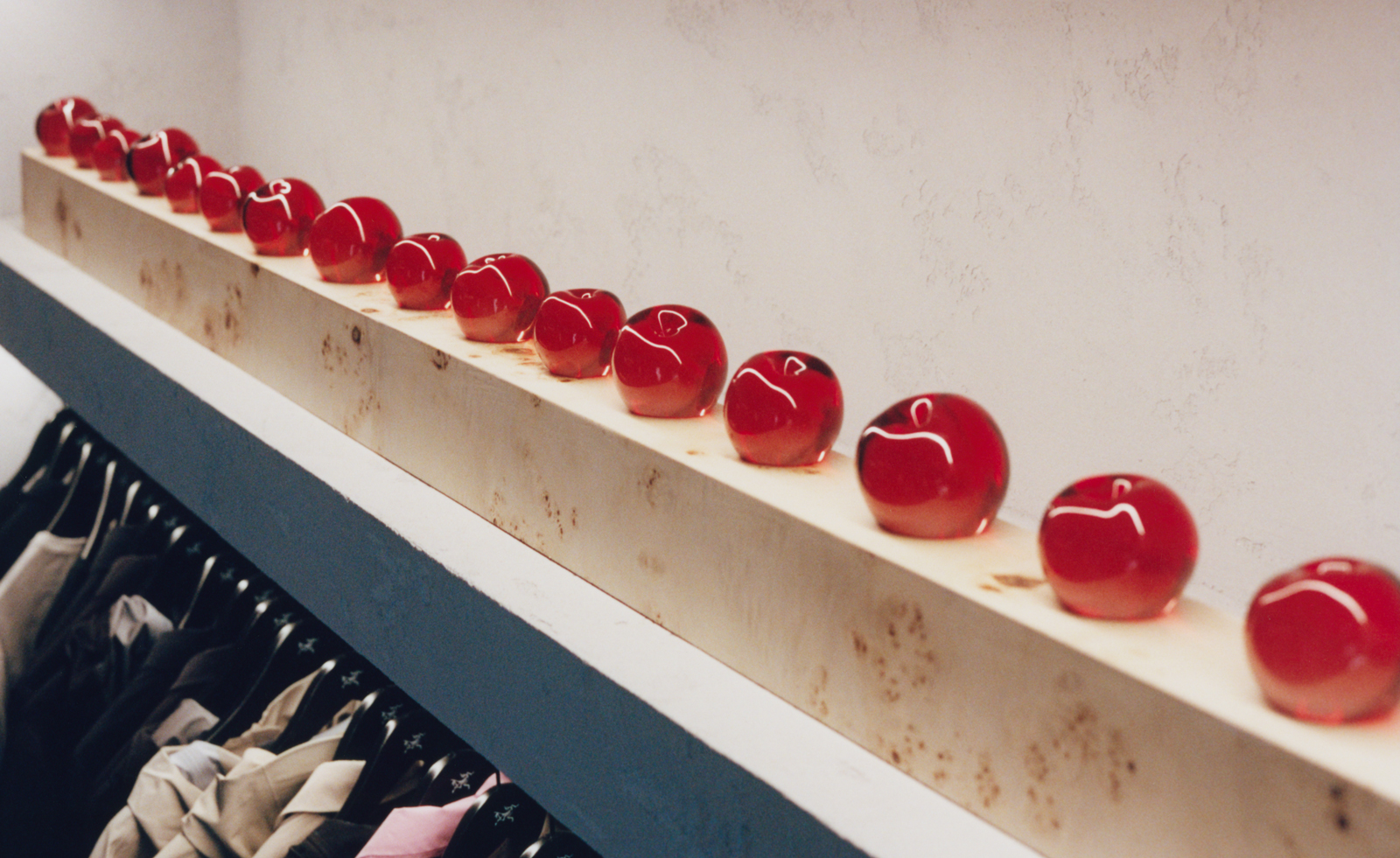
Food sculptures by Imogen Kwok
The trompe l’oeil – defined as ‘a visual illusion in art’ – is nothing new in the realm of food. Fanciful, surrealist food sculptures were also popular in the courts of Europe, favoured at the banquet tables of Marie Antoinette and Henry VIII, and popular at Early Modern festivals and feasts. There was ‘the pie with four and twenty blackbirds’, from which birds were released when the pie crust was cut. Centrepieces spun from sugar were wielded into the extravagant shapes of towering palaces, fountains and mythological Gods, described by Ewa Kociszewska of the Academy of Fine Arts in Warsaw as ‘reminiscent of sculpture in marble’. Macchina della Coccagna was a form of edible architecture popular at Neopolitan festivals during the reign of the Holy Roman Emperor Charles VI, remembered as a ‘gastronomic utopia’, where ‘fountains flow with wine, trees bear cakes, animals cavort ready for carving’. It was something of a Renaissance Charlie and the Chocolate Factory.
The whimsical, mythical nature of such banquets, alongside the work of modern-day food artists, certainly recalls a childish fantasy towards food. If you were lucky, cakes were once baked into fanciful shapes, taking the form of animals and castles, with an added excess of food colouring. With beloved baked inventions such as gingerbread men and gingerbread houses, a delight of creation abounds in youth when it comes to food. Then there’s the ritual make-believe that comes with feeding small children; parents crowing, ‘Here comes the train’ as food approaches the mouths of unwitting toddlers. These are, in many ways, more modest forms of the fantasies that accompany the sculptural feasting tradition and the food art installation.
The childhood-like joy that can surround food has always been a key point for Gohar. ‘I'm really interested in spaces of wonder and play [...] and how to create environments that allow for and encourage that play,’ she says. For Kwok, too, the charming ‘surprise and delight factor’ of her food has become her signature. Food as a vehicle for joy was also key for Dalí, who wrote in the introduction to his cookbook, ‘If you are a disciple of one of those calorie-counters who turn the joys of eating into a form of punishment, close this book at once’.
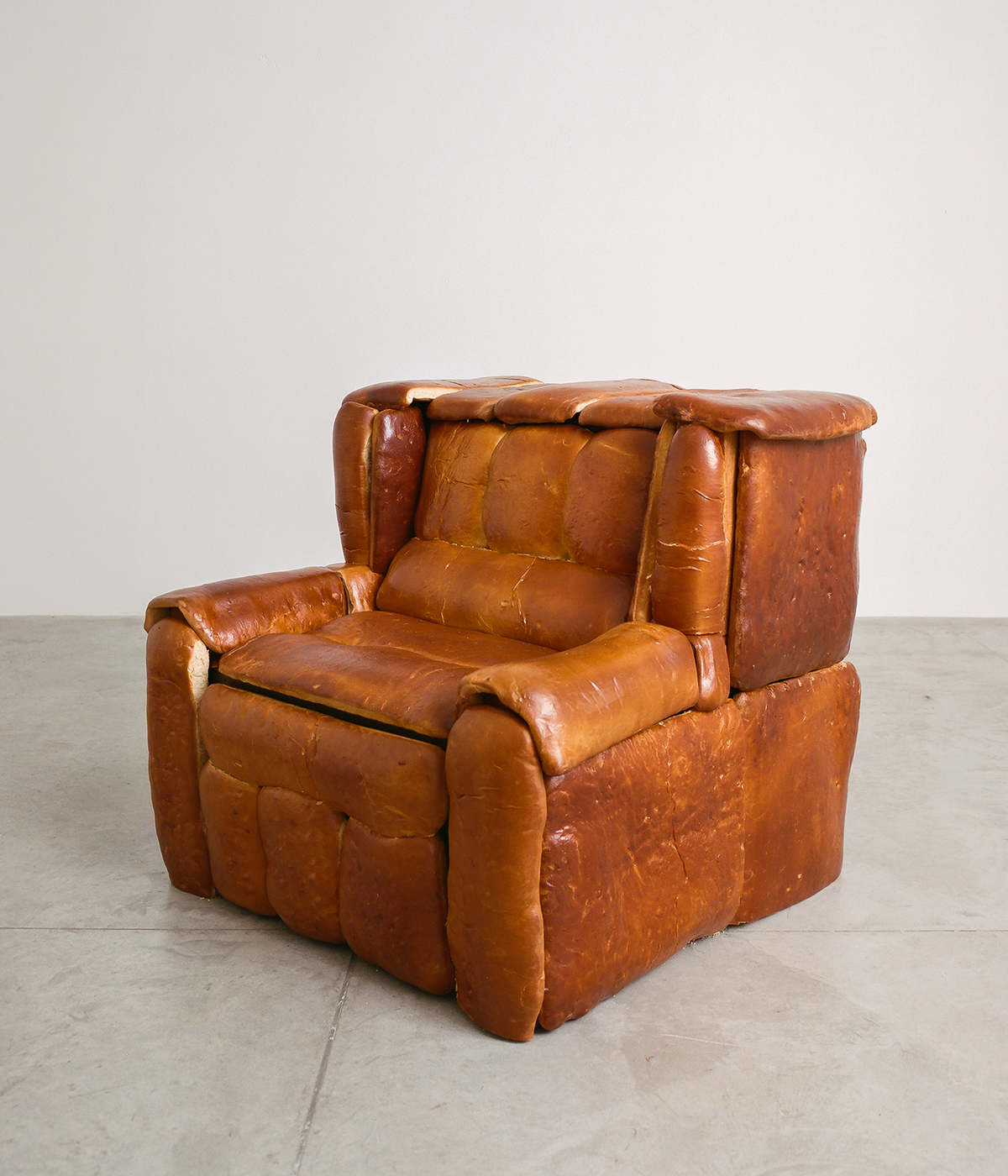
Loaf by Laila Gohar
But when these sculptures enter the spaces of high fashion, with its complex relationship with food, limitation cannot be so quickly dismissed. And food art has become the choice-du-jour of the fashion world, increasingly seen across campaigns and at events. Gohar has worked with brands such as Comme des Garçons and Hermès, Kwok with Loewe and Prada.
In this context, where food sculptures are sought-after for their heightened aesthetics, they end up proliferating online in image form. As Gohar notes, ‘I think Instagram has contributed a lot to more and more people getting interested in [food art]’. For the outsider, who will never taste this food, food thus transforms into an object over a tangible, edible thing. It feels somewhat disconnected from its roots, from supply chains, and from the body itself. As Barbara Kirshenblatt-Gimblett, professor emerita of Performance Studies at New York University, writes, dissociating food from satiation produces radical effects: ‘Such dissociations produce eating disorders, religious experiences, culinary feats, sensory epiphanies, and art.’
‘[Food] is becoming a luxury, it’s moving further away from people’
Barney Pau
And when food is leveraged as an aesthetic choice by high-end brands, food-as-theatrics is inevitably heightened over food-as-nourishment. In an Ozempic-fuelled era, where appetite is increasingly suppressed and even feared, such a transformation of food into a spectacle and an object of fashion is perhaps telling.
Importantly, food aesthetics are also deeply interwoven with class. As the banquets of royals revealed, sensationalised culinary creations have historically been a signal of wealth, a notion the fashion industry is now replicating. For when food enters high-fashion spaces, its tendency towards status symbol is heightened.
‘[Food] is becoming a luxury, it’s moving further away from people,’ says Barney Pau, a food artist who is keen to ensure his food remains accessible. ‘I think the whole premise of the high-fashion industry is this idea of desire and the inaccessibility of desire.’ The care and detail that goes into this rank of food, as well as the often refined ingredients, signals vast time and resources unavailable to the masses.
It stands at the opposite end of the spectrum from the fast-food, quick-fix meal culture that has come to accompany economic, and thus time, scarcity. As the term ‘beige food’ connotes, aesthetics and diversity are notably lacking in such diets; instead, food pleasure comes quick and cheap. For under capitalism, the joy of preparing, presenting and sharing food, as with the creation of art, is increasingly an unequalised thing.
Of course, for those able to partake in the luxury of food, the pleasure to be found in sustenance moves into something infinitely more textured. Food transforms into a feast for both the eye and the stomach, a beautiful thing and a nourishing thing in turn. In Pau’s experience, the reception of art ‘can be expanded tenfold’ when it is consumed. ‘Not only are they [the consumers] mentally nourished by what they might be seeing, they can also be physically nourished,’ he says.
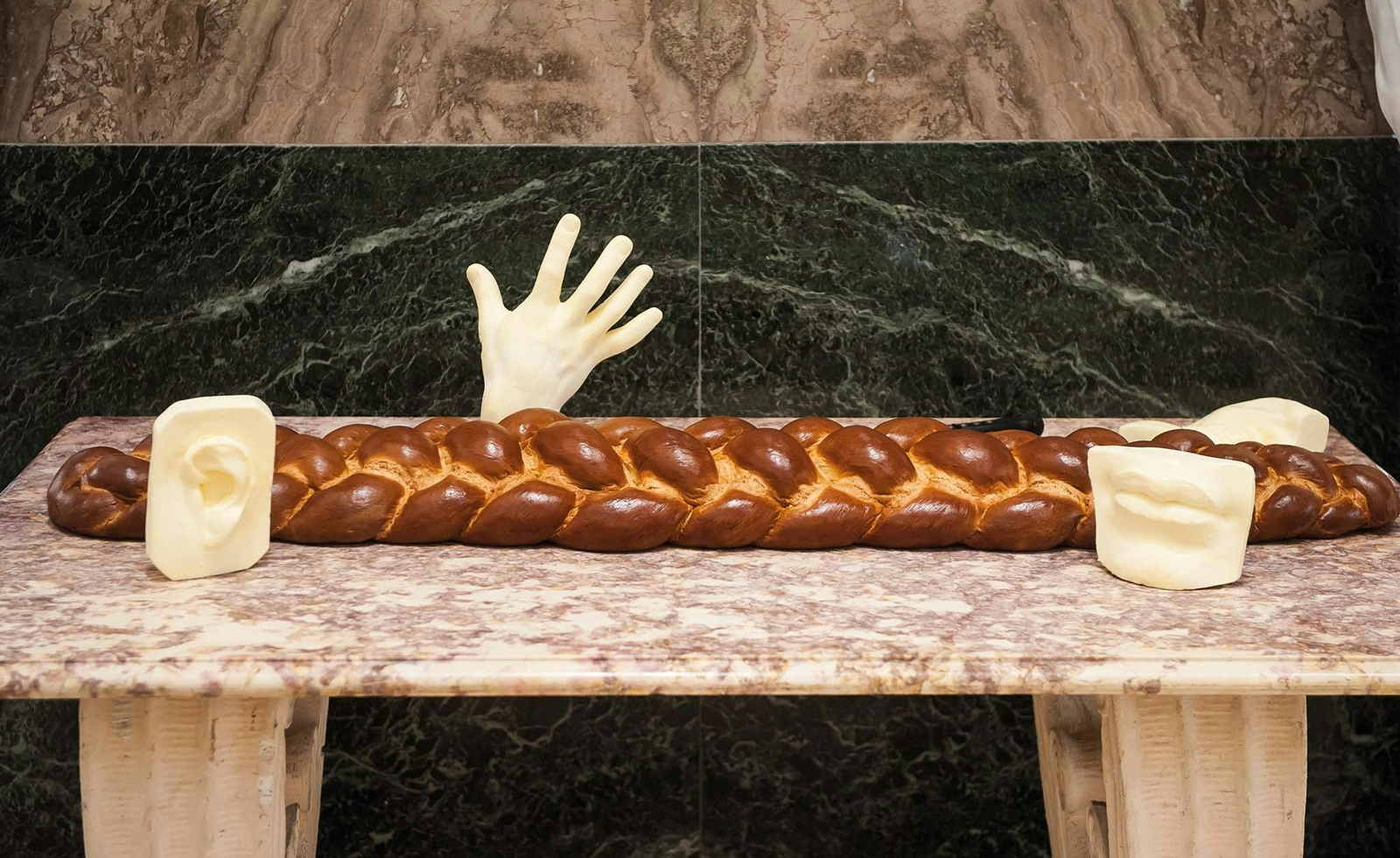
Bread and butter sculptures by Laila Gohar
For Gohar and Kwok, the added dimensions beyond aesthetics are also key to their practice. ‘I hate food for display. I think that it’s wasteful, and it's kind of in bad taste,’ says Gohar. Kwok too notes that ‘it really has to taste good’. She thinks a lot about the ‘edibility’ and ‘approachability’ of her food at events, ‘how someone is going to hold it or put it onto their plate and bite into it’, she says.
Food art also functions as a source of interaction and shared joy, as food is for many of us – albeit on a more modest scale. Gohar notes that her food can be ‘an icebreaker and a conversation starter’. With this style of artful catering, food shifts away from the individual dining experience and the solitary menu choice into a collective experience. In today’s climate, ‘people really crave experience and realise more than ever the value in experience’, says Gohar. For Pau, his edible tablescapes are a useful tool for queering consumption – for allowing diners to rethink something as everyday as eating.
And it's definitely a step forward that people are now ‘paying attention’, as Kwok says, to the service industry. ‘It wasn't like that when I started cooking,’ she says. And hopefully, one day, the playing field of food and art will be a little more even too. We might all be able to find a little more luxury in food, to consume food amongst peers, with our bellies, rather than our social media, full.
-
 Extreme Cashmere reimagines retail with its new Amsterdam store: ‘You want to take your shoes off and stay’
Extreme Cashmere reimagines retail with its new Amsterdam store: ‘You want to take your shoes off and stay’Wallpaper* takes a tour of Extreme Cashmere’s new Amsterdam store, a space which reflects the label’s famed hospitality and unconventional approach to knitwear
By Jack Moss
-
 Titanium watches are strong, light and enduring: here are some of the best
Titanium watches are strong, light and enduring: here are some of the bestBrands including Bremont, Christopher Ward and Grand Seiko are exploring the possibilities of titanium watches
By Chris Hall
-
 Warp Records announces its first event in over a decade at the Barbican
Warp Records announces its first event in over a decade at the Barbican‘A Warp Happening,' landing 14 June, is guaranteed to be an epic day out
By Tianna Williams